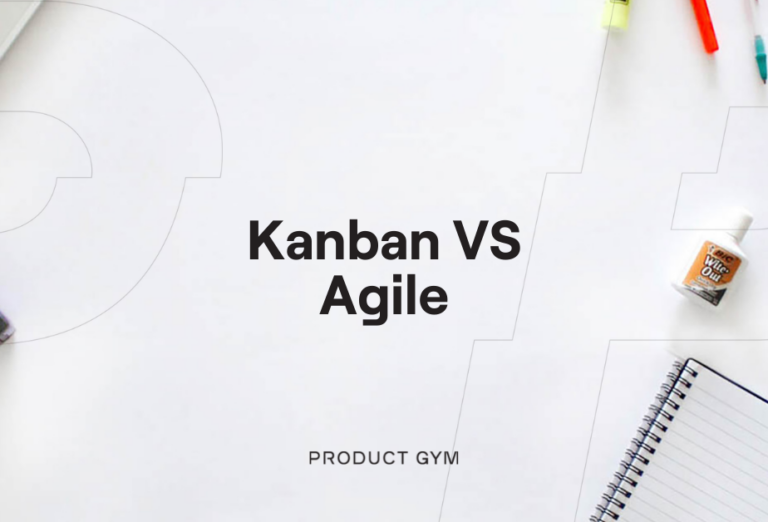In our continuing series detailing the advantages and disadvantages of software development methodologies, we will discuss key differences between Kanban vs Agile.
The comparison between Agile and Kanban can be murky, since Kanban is a framework that teams commonly apply within the Agile methodology. However, Kanban is not necessarily an iterative process.
Agile vs Kanban: Definitions
Agile is a project management methodology that divides big, complicated projects into smaller, more manageable portions. Companies first employed agile project management in software development to expedite project completion, but it is now being utilized across various sectors.
The Kanban framework is simply a “Board”. Kanban is a rough translation of the word “sign” in Japanese. This board is essential for illustrating the task process. It aids in the smooth flow of tasks across various teams and serves as a strategy for establishing, managing, and enhancing knowledge work delivery services.
The Kanban technique allows you to reprioritize work based on the demands of your stakeholders. The team works together to enhance the efficiency of the project’s workflow, adding work until the flow is stable and tracking progress from one stage to the next.
Keep in mind that Kanban functions within Agile processes. However, Kanban is not limited to pre-defined procedures or sprint backlogs
Agile vs Kanban: Pros and Cons
The Agile methodology is a development and testing process that is iterated continuously throughout the SDLC life cycle. Agile development is an alternative to Waterfall or sequential development and an excellent method for people who wish to work with constant feedback.
The core of Kanban is to have work items displayed visually. It enables team members to view the current state of each piece of work at each step of development. From there, a team member has an overview of who is doing what and can detect and eliminate process flaws.
What Are the Benefits of Agile?
Agile is a popular methodology, commonly used when:
- Your team doesn’t know the end objective of a project
- Development needs adjusting to meet the needs of the product owner
- A project requires changes within shorter planning periods
What Are the Disadvantages of Agile?
There are drawbacks of employing an Agile framework, including:
- Sprint planning may take up a whole day for an Agile team
- Less predictability at the initial planning phase
- Increased demand for cooperation between developers and clients.
What Are the Benefits of Kanban?
The primary “pros” for incorporating a Kanban method include:
- Removing waste and tasks that don’t bring value to the team
- Shorter cycle times allow for speedier delivery of features
- Involving QA in every phase of development
- Rapid feedback loops may result in team members who are more motivated, empowered, and engaged in their work.
What Are the Disadvantages of Kanban?
Remember that no system is perfect, and Kanban flaws crop up when:
- Boards become outdated, leading to issues in the development
- Boards can quickly become overcomplicated
- There is no established time frame for the project
Agile vs Kanban: Which Is Better?
It isn’t easy to compare implementing Kanban versus another Agile framework because the Kanban method is, essentially, nothing more than a format used within Agile. While the Agile approach is a development and testing process that is iterated continuously throughout the SDLC life cycle, it can easily incorporate the Kanban method to visualize the workflow and is simple to learn and comprehend.
In the end, the Agile method’s objective is to satisfy the client by delivering software promptly and integrating the shorter cycle durations enabled by the Kanban method to deliver features more quickly can help.
Breaking the project down into smaller chunks in the Agile approach allows the Agile team to focus on high-quality development, testing, and collaboration.
When Should You Use Agile?
Agile can be an excellent option for products with several features, and when you need to estimate how long they will take to complete. For feature development, Agile is a valuable framework. It uses set sprints so you can track your progress and calculate your speed as you go.
Agile is a good fit for feature development because:
- The task goes from being a huge, undefined piece into something that you can break down into smaller parts.
- The project is part of a more extensive set of long-term objectives.
- Regular set timeboxes allow you to track your progress. With fixed timeboxes and a rate of development, you may plan for long-term objectives.
When Should You Use Kanban?
Kanban works effectively in situations when there isn’t a large backlog of features to work through. Instead, the emphasis is on swiftly completing little chunks of work as they arise. A team tasked with resolving production issues is a good illustration of this. Kanban works well in this situation because planning is useless or irrelevant since the job is done in little discrete chunks with no overarching long-term purpose or goal to achieve.
Still Have Questions?
If you’re learning the ropes of product management, it helps to have some support. Product Gym is a lifetime membership program for PMs, PM job hunters, and product people of all sorts. Getting people jobs in product management is our bread and butter: that makes us very good at assessing where you’re at in your job hunt and equipping you with the knowledge and skills you need to kickstart your dream career in product management. And that includes necessary information like learning about Kanban and the Agile Methodology.
If you want to learn more about the ins and outs of Product Manager skills and job search tactics, get in touch with us! We’re offering free career coaching sessions with our in-house team of PM Recruiter experts. We’d love to hear from you.




